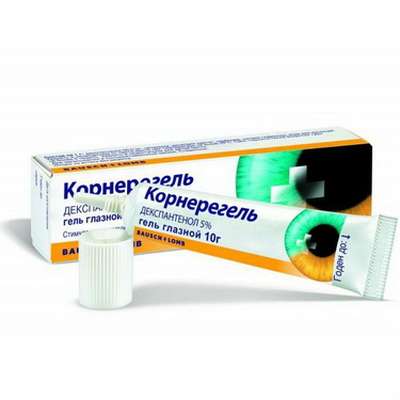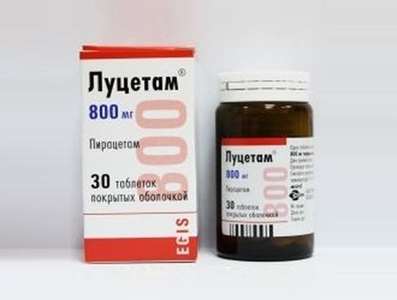Endorphins
09 Dec 2016
Physiologist Dr. Doping tells about action of morphine on the brain, hazard depending on opioid and endorphin braking.
Endorphins - it is quite unusual picks when you look at their chemical structure. The fact that endorphins are peptides. Peptide is an amino acid chain. Most mediators are either amino acids or amino acid derivatives and are rather small molecules. A peptide neurotransmitters are chains of amino acids 5-15, then there is a much larger molecular aggregate. Opened endorphins in the late 70-ies. At this point, we realize that there may be such a thing as a peptide neurotransmitter. Up to this point it was only known peptide hormones (insulin or growth hormone), and it turned out that in the brain and in general in the central nervous system such molecules work.
To improve cognitive and brain function, Language ability and to awake brain – buy Picamilon, Phenylpiracetam, Cortexin, Noopept, Piracetam, Cogitum and Semax.
The discovery of endorphins was the result of long and persistent search of, and what kind of mediators act on the so-called opioid receptors. main component of opium - At this point, the opioid receptors in the brain, which acts morphine were found. Since morphine acts on the brain and causes pain relief and euphoria, perhaps there is something in the brain that is similar to morphine and is an endogenous mediator of these receptors. So endorphins were discovered that were suddenly very different from morphine, because morphine - it is such a complex, 3D-configured molecule with a bunch of benzene rings, and endorphins - a chain, for example, of the five quite common amino acids, which are conventional proteins . In the first place tyrosine, then two glycine, phenylalanine, then, and then, for example, methionine. It turns met-encephalin, and, at first glance, to morphine, it does not like. But when they began to analyze more than fine, it turned out that there are four key points in the molecule of endorphins, which are included in the opioid receptor. Turns, morphine simulates these four key points, that is, the total configuration of morphine is not the same as in the endorphins, and the action and principle of getting opioid receptors occurs in exactly the same way. In fact, opium poppy makes a biochemical "feat": a plant (and some other plants of the buttercup family) has managed to pick up the master key non-peptide receptor that responds to the peptides.
Opium and morphine are known to mankind since time immemorial, because along with the other potent drugs - cocaine or marijuana - the remains of plants found in the most ancient archaeologists excavations. Plants with a drug-like activity found in America, and in India, and Egypt - in all areas where traces of ancient civilizations recorded. For centuries, we knew that opium - the dried juice of the opium poppy - has a calming, slightly euphoric, sedative effect. As such a substance, and used.
XIX century has come, and of opium chemists were able to isolate the active principle and named this molecule morphine, believing, apparently, that the main effect is hypnotic, because Morpheus - god of sleep. It was found that the main effects of morphine in the direction going, firstly, analgesic (pain relief), and secondly, the euphoric effect that is on the positive emotions centers. Morphine immediately, even in the XIX century, received the widest use in medicine, particularly in the military field surgery in hospitals, when it was necessary to do the operation. This is the XIX century, it has invented a firearm, there is a serious war - the war between North and South in the United States or the Franco-Prussian War in Europe.
In the middle of the XIX century it became totally morphine used for pain relief. At this point, I suddenly found that anyone, if he administered morphine, just a couple of weeks, it becomes morphine-dependent, that is a drug addict. It was a discovery for the medicine of the time, because up to this point considered that addiction occurs as a kind of human weakness: the man became a drug addict, because he has some psychological problems, he is weak and so on. At this point, it suddenly turned out that any person can make a drug addict, if, for example, every day for two weeks he administered morphine. Some physiological processes occur in our brain, in our nervous system, which lead to a fatal occurrence of addiction and dependence. Since then were treated for addiction to both disease and from this standpoint it is viewed, to operate it.
In XX century, we began to look for receptors for morphine, when they realized how the system works. It is clear that there must be the synapses, where such receptors are running and functioning. As a result, the binding sites of the protein molecule were found, and they are called opioid receptors. We know the three major classes of opioid receptors: mu, delta and kappa. First opened mu-opioid receptors - we can say that they are the main ones. Mu - this is just the word "morphine", that is, from here came from a designation of these receptors. A few years later I discovered endorphins, i.e. peptide neurotransmitters that act on these receptors, morphine whose effect imitates.
It turns out that our body endorphin system operates in two main blocks, absolutely independent: First, in the centers of pain control, secondly, a positive emotion control centers. Control of pain centers are mainly located at the entrance to the spinal cord and brain input. These are the areas where the spinal cord enters the spinal nerves, and the head includes a trigeminal nerve, responsible for perception of pain sensitivity heads. There is a special synapses that control the input of pain signals, and the real challenge - it is not to miss the weak pain signals. There's all the time a bit is allocated endorphins and encephalin, and they constrain the weak pain impulses. This is important, because we have all the time in life experience minor damage, and if all the pain signals transmitted on, we would have all the time all sore. Pain as a sensory phenomenon occurs when damaged cells and tissues, no matter what: it crushed mechanically, thermally burned or electric shock. It is important that the damaged cell, its membrane is damaged, there are special substances such as histamine, which further trigger pulses, the pulses are running, and then, at the level of the cerebral cortex, it is perceived as pain. To block a weak pain signals, endorphins work. If they do not, all we would have hurt: hit the foot of the table - has hurt the intestine processes went somehow wrong - is already hurt. It is useful to block weak pain signals and pass only the average and strong.
If you use morphine, then the potential of morphine as an opioid receptor agonist, is so great that the morphine is able to block any pain at all - is not only weak, but also moderate, and severe, and even the Super Bowl. The system is made so that opioid pain inhibition is above the entrances. The same spinal nerves and bring skin sensitivity, and temperature, but there is no synapses with endorphins. They exist only where there is transfer of pain. Therefore, the use of morphine, a seemingly perfect and adequate way: you turn the pain channels only, while the person continues tactile feel his hand - not like from Novocain, and you do all the block.
All is good, but the synapses, where they work endorphins, were the most susceptible to the formation of addiction and dependence. If you do start to "bale" morphine, these synapses in response to start to reduce their activity, ie, morphine - a opioid receptor agonist. At that moment, when you start to use it, the system sees went too far analgesic signal. Opioid receptors are gone, the synthesis of endogenous endorphins decreases. In order to block the pain, you have to increase the dose (this is called habituation), and in that moment, when you decide to abandon opioid suddenly appears that even now the system does not work: the slightest weak pain signals are now free to go, body aches and having terrible withdrawal syndromes, which in the case of morphine or its derivative heroin burdened by pain.
This is a huge risk of dependence on opioids compared to other hard drugs. On withdrawal syndrome present a very strong pain, because when people are dependent on nicotine, cocaine, alcohol, we can talk about the development of depression, hallucinations, but at least no pain with such intensity. (You can reduce it with Meldonium) In the case of morphine-heroin addiction there is a very strong pain, addicts describe this feeling as follows: the body burns the fire, pulled out pieces of skin and other spooky stress, the heart beats at 200 beats per minute, and a person can die from cardiovascular disease.. It's just pain control.
Evolution is so constituted that still exist in the centers of endorphin inhibition of positive emotions. Everything is made trickier. In the center of positive emotions generated by the joy, if we do something successfully done, but that we are not too happy over these centers is GABA inhibition, that is, there are GABA neurons that do not give us too rejoice. Biologically this is understandable, because the kid, who euphorically runs through the forest, will not live long, so joy must be within reasonable limits.
But that GABA neurons are not led us into a depression, and above them there is endorphin braking, so when using the same morphine, besides anesthesia, analgesia, the second effect is the inhibition of the brake unit above the centers of positive emotions. There is euphoria, which is particularly attractive for drug addicts. The problem again is that addictive and dependence occur quickly and on a withdrawal syndrome develops black depression - any sort of positive emotions, and this is a very difficult situation.
Thus, it appears that endorphin system and related drugs such as morphine and its derivatives, - is, on the one hand, the most important control pain, and on the other hand, the target for the action of the most dangerous drugs, because this drug morphine series easiest form dependency, addiction, from this dependence to get the hardest.
These narcotic properties of morphine have been realized in the XIX century, and the entire second half of the XIX century, chemists were looking for, and what I could do with morphine analgesia to left, and addiction and dependency do not occur. Knowing nothing about the principles of synapses, they are blind to modify this molecule, and at some point it seemed that happen. The result was a molecule that is 10 times more potent than morphine, it is possible to use a smaller dose. It was called "heroic painkiller" (abbreviated - heroin), and then it turned out that the addictive and dependence occur more rapidly, and now heroin - is the most dangerous drug. Unfortunately, our country is in a very difficult situation, because the drug trafficking from Afghanistan is precisely through the territory of Russia, and the number of heroin is extremely large, it really is a terrible problem. A man who got into this situation, it is extremely difficult to get out of addiction, of dependence, in addition he is completely disconnected from the outside world because the specificity of morphine, heroin buzz is that people are lying somewhere in a corner, did not interact with the outside world, on two or three hours of pleasure, then it is two to three hours came to himself, and then begins a withdrawal syndrome, and it is ready for a new dose on anything. Therefore, it is the hardest problem, and, of course, morphine and heroin are drugs that even once in any case it is impossible to try, because even after a single use of that heroin can be broken synapses in the centers of positive emotions, in the centers of pain control, and this can be fatal.

 Cart
Cart





